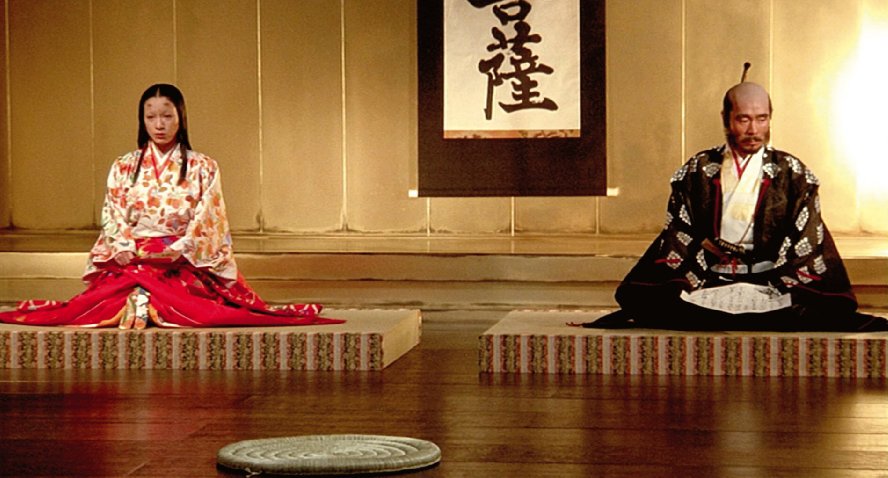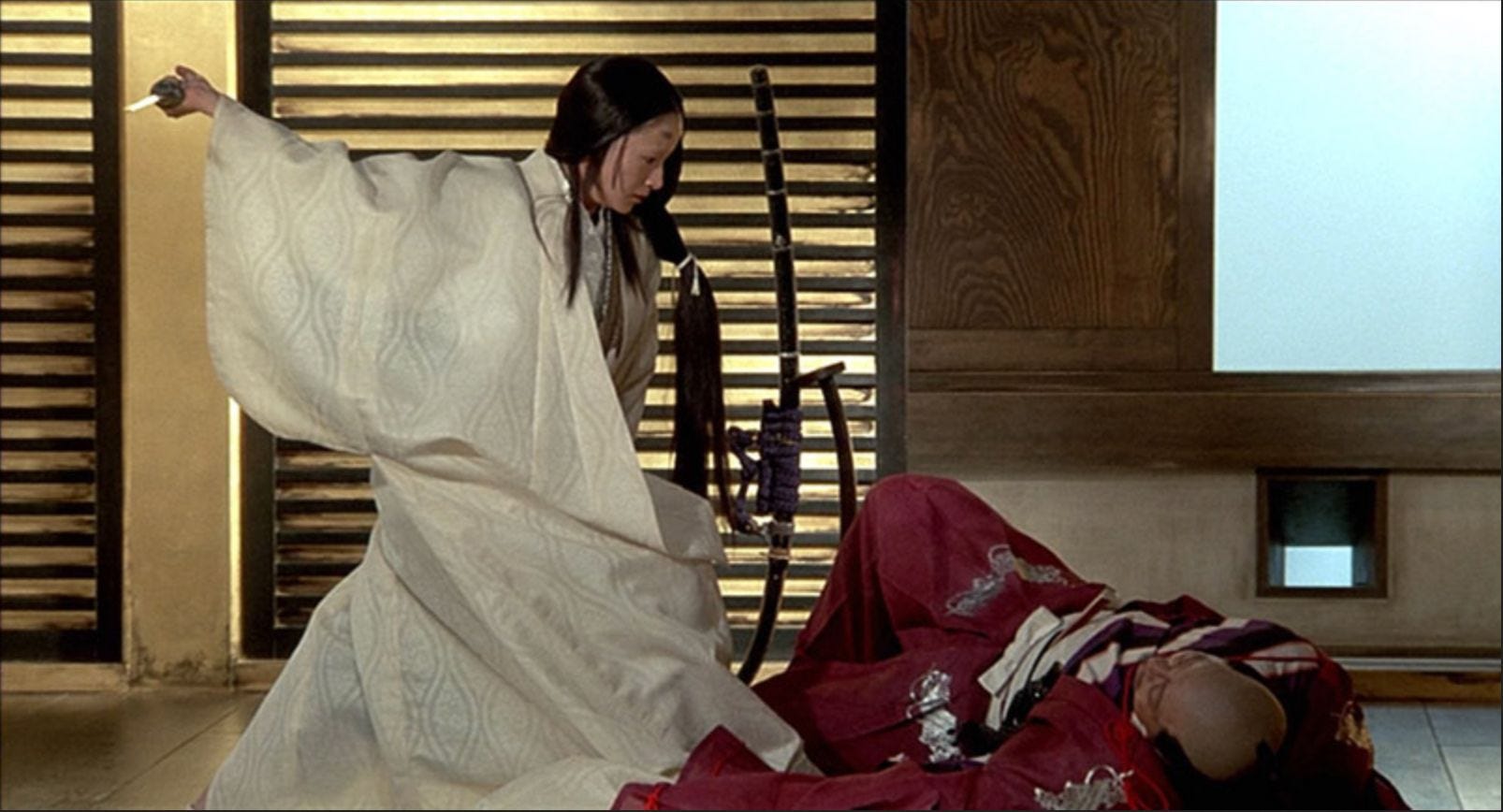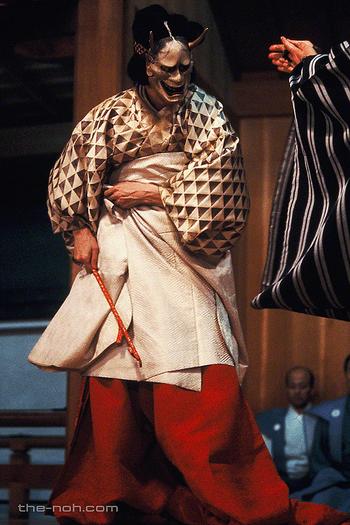
Akira Kurosawa had been planning "Ran" ("Chaos") for a decade after reading about real-life Sengoku warlord Mori Motonari and his three loyal sons and trying to imagine what would have happened instead if they had been bad. It was later that he learned of the parallels between what he was conceiving and Shakespeare's tragedy, "King Lear," and began fusing them into a story, elaborately storyboarding it with hundreds of paintings. Following the success of the critically acclaimed "Kagemusha," he was able to secure the financial backing of French producer Serge Silberman. (Yes, that castle, a set purpose-built on the slopes of Mount Aso, is burning down for real, as the distraught Hidetora staggers unhindered through the armies of his warring sons, an empty scabbard dragging behind him.)
Emi Wada's sumptuous costumes won an Academy Award and are gorgeous. The period is appropriately the Sengoku Jidai (late 16th c.) and we meet our "Lear," Lord Hidetora (Tatsuya Nakadai) hunting deer with his sons, Taro, Jiro and Saburo, in the mountains. 


In this post hunt scene, Hidetora and his sons are relax in a curtained enclosure with refreshments. They are all in beautiful hitatare ensembles and wearing folded eboshi (caps), clothing that signifies high rank and a degree of formality.
The old lord dozes off, then wakes with the determination to divide his domain. Taro is to become leader of the Ichimonji clan and receive his first castle, with the other sons to receive castles of their own and orders to support their elder brother, while Hidetora retains his title as great lord. Saburo, the middle son, protests that this is foolish and dangerous and when one of Hidetora's retainers, Tango, comes to his defense, Hidetora banishes Saburo and Tango.
It all spirals down from here. Lear's great sin in that tragedy was foolishness. Hidetora's, we come to see, is cruelty, as his past ruthless acts as the head of a clan come back to bite him.
Let's talk about Taro's wife, Lady Kaede (Mieko Harada), here with Taro (Akira Terao), both of them looking like subjects from period portraits in this shot. Kaede's family was murdered by Hidetora, their lands taken, and she was forcibly married off to his son. She sees Hidetora's abdication as a way to make him pay. So she will. (She also gets to wear some gorgeous stuff in the process!)


She has her uchikake (outermost robe) tied around her waist in a cool, summery style. You can see the tips of her front tied obi peeping out in the center, as well as some of the layers of robes as the collar, similar to this 16th c. portrait of Oichi no Kata. Taro is dressed in formal hitatare.

This uwagi is spectacular, in a dan gawari pattern of alternating blocks of dark red and white decorated with pauwlonia blossoms. The layer beneath it appears to echo the pawlonia motif.

Another dan-gawari uchikake, this one in heavy metallic brocade.
 When her husband is killed, Kaede (in mourning white) comes to his brother Jiro, first demurely presenting her husband's helmet, then unleashing her rage in a disturbing scene where she holds a blade to her brother in law's throat and seduce/rapes him. The aftermath as the camera follows her obi, trailing like a snake on the floor as she puts it back on, is one of those Kurosawa touches. The silvery black and white she wore beneath the white is almost like scales.
When her husband is killed, Kaede (in mourning white) comes to his brother Jiro, first demurely presenting her husband's helmet, then unleashing her rage in a disturbing scene where she holds a blade to her brother in law's throat and seduce/rapes him. The aftermath as the camera follows her obi, trailing like a snake on the floor as she puts it back on, is one of those Kurosawa touches. The silvery black and white she wore beneath the white is almost like scales.

Then designer Emi Wada pulls out all the stops with this number as an unrepentant Kaede faces her fate. That triangle pattern is symbolic of snake or dragon scales used in Noh - compare to the costume from the play "Dojoji"

